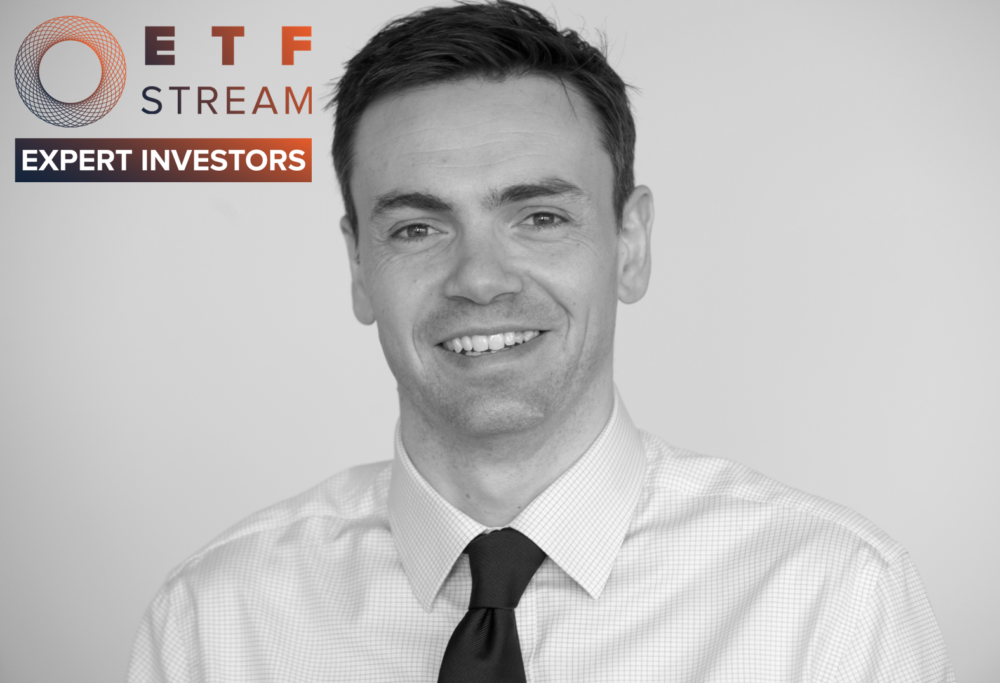brought to you by
ETF Stream
where on a fortnightly basis we interview the key individuals from across the fund selection and research space about the ETF ecosystem.
Fund selection plays a crucial role in portfolio construction. Once the asset allocation decision has been made, these individuals need to decide how they want to be exposed, be it through a mutual fund, investment trust or ETF.
Over the years, ETFs have become an increasingly important part of any investor’s toolkit. This series will show how the key players across the fund selection space use ETFs in their portfolios while asking what more can be done by the ETF providers to help with this increasing adoption.
Next in the hot seat is Iain Barnes, head of portfolio management at Netwealth. Barnes has spent four years at Netwealth where he is responsible for running the discretionary portfolios. Prior to this, he spent six years at UBS as a senior multi-asset portfolio manager having he started his career at Schroders in the multi-manager team.
How much of your portfolio is made-up of ETFs/index funds?
Our starting point is for 100% of our investments to be made through ETFs and passive funds.
But we never say never – if the right active opportunity presents itself, we would consider it.
It is most likely that this would be as a defensive move, to avoid an undesired exposure of a given index, rather than because of a strong belief in a particular manager’s inherent skill to deliver future outperformance at a particular point in time.
When did you start investing in ETFs?
We have invested this way from the outset. ETFs and passive investments were an integral part of our thinking when we started Netwealth four years ago.
Our investment process and choices are designed in sympathy with how we operate as a firm – which demands a high-quality offering delivered efficiently.
Before joining Netwealth, I had invested in ETFs alongside actively-managed strategies since the mid-2000s.
Which asset classes do you tend to invest in through ETFs?
Chiefly, our long-term strategic mix of assets consists of a globally diversified blend of domestic, developed and emerging market equities, government and corporate bonds, and cash. Each of these displays distinguishing and valuable characteristics.
We also have the scope to invest in commodities and other alternative asset classes so long as they meet our pre-requisite of daily liquidity, but have not yet found a compelling reason to do so.
Which areas would you avoid?
Unsurprisingly, we are not at all keen on 3x leveraged inverse oil ETFs, or typically anything with an esoteric ring to it.
Our clients appreciate that their portfolios have 100% daily liquidity, that we do not use leverage and we also tend to avoid funds which are synthetic-backed.
What is your methodology for selecting ETFs?
You have to look closely at the packaging. We consider several key criteria when selecting the specific passive fund or ETF to invest in for each asset class, including:
- how a fund’s underlying investments and benchmark index fit with our desired exposure within the specific asset class
- how well the fund tracks its underlying benchmark index, paying particular attention to periods of stress
- the replication methodology – for example, whether the fund physically holds all the underlying securities of an index or whether a sampling or swap-based strategy is used
- the total cost of investing in the fund, incorporating implicit transactional costs alongside management fees
- the overall size and liquidity of the fund as this has implications for its tradability by the market.
We do not switch allocations frequently, but as we are trading most of the ETFs we own on most days to meet client interest, having confidence in the liquidity and tracking behaviour of each of our selected ETFs on any given day is paramount.
Do you have an ETF provider preference?
No, we are agnostic on ETF provider, and we invest on an instrument by instrument basis. Because we do not invest in esoteric areas, we do find that our portfolios are drawn towards the larger providers as scale usually enables ETFs to meet their mandate effectively.
As a result, the majority of our allocations are held with BlackRock, Vanguard and a few others.
We have not yet needed to switch provider because of performance issues, but constantly monitor the sector for new launches and re-pricing of existing funds keeps us on our toes.
What ETF products would you like to see more of?
Where underlying markets have abundant liquidity, we think it will be interesting to see ETF providers who can engage with direct indexing, to offer investors the chance to construct their own indices according to their specific constraints, preferences, values and risk tolerance while retaining the functionality of the ETF wrapper.
This could prove to be particularly relevant in the environmental, social and governance (ESG) space, as already we are seeing an abundance of different ESG and socially responsible investing (SRI) ETFs, but investors are reliant on the index giants for portfolio construction.
At the more prosaic level, cost-effective currency-hedged lines of established ETFs are still absent in many cases.
As currency allocation forms a significant part of our asset allocation process, we’d love to have more tools at our disposal to affect these views.
Are there any areas ETF providers could improve?
We think the ETF providers have a great opportunity to lead on issues of corporate governance, and to set the industry benchmark in terms of a greater consistency of data provision around ESG factors and other criteria.
To read the previous edition of Expert Investors with Oliver Smith of Sandaire, click here.



